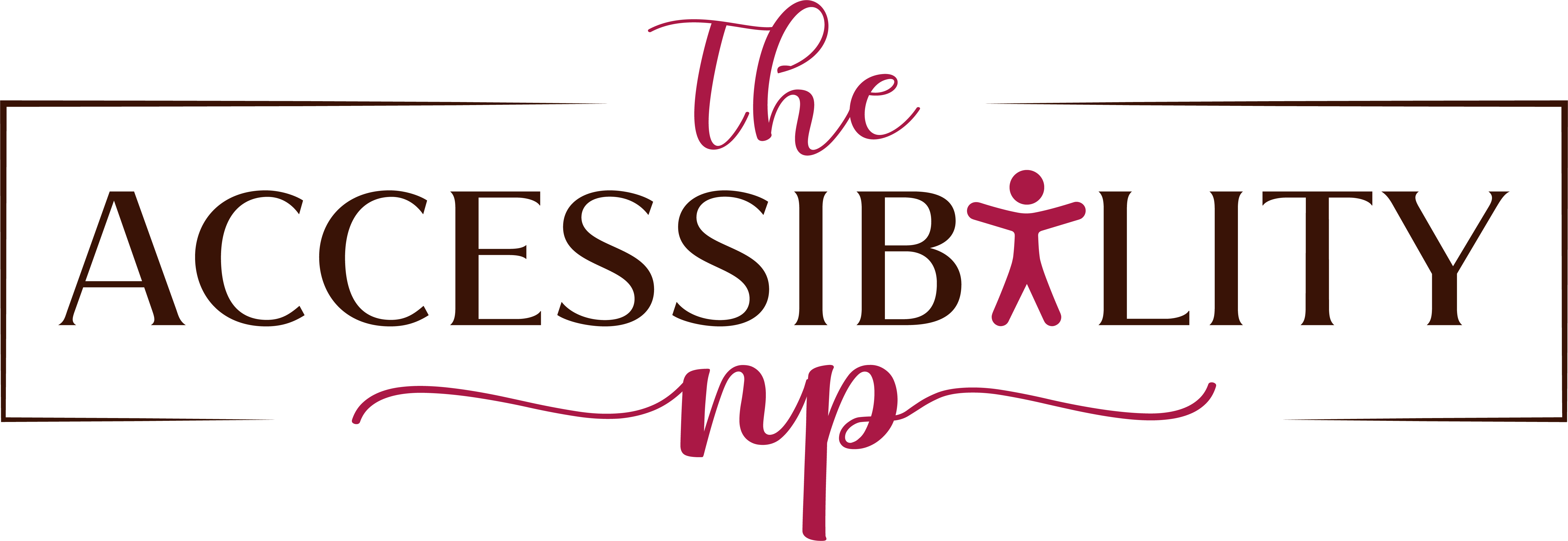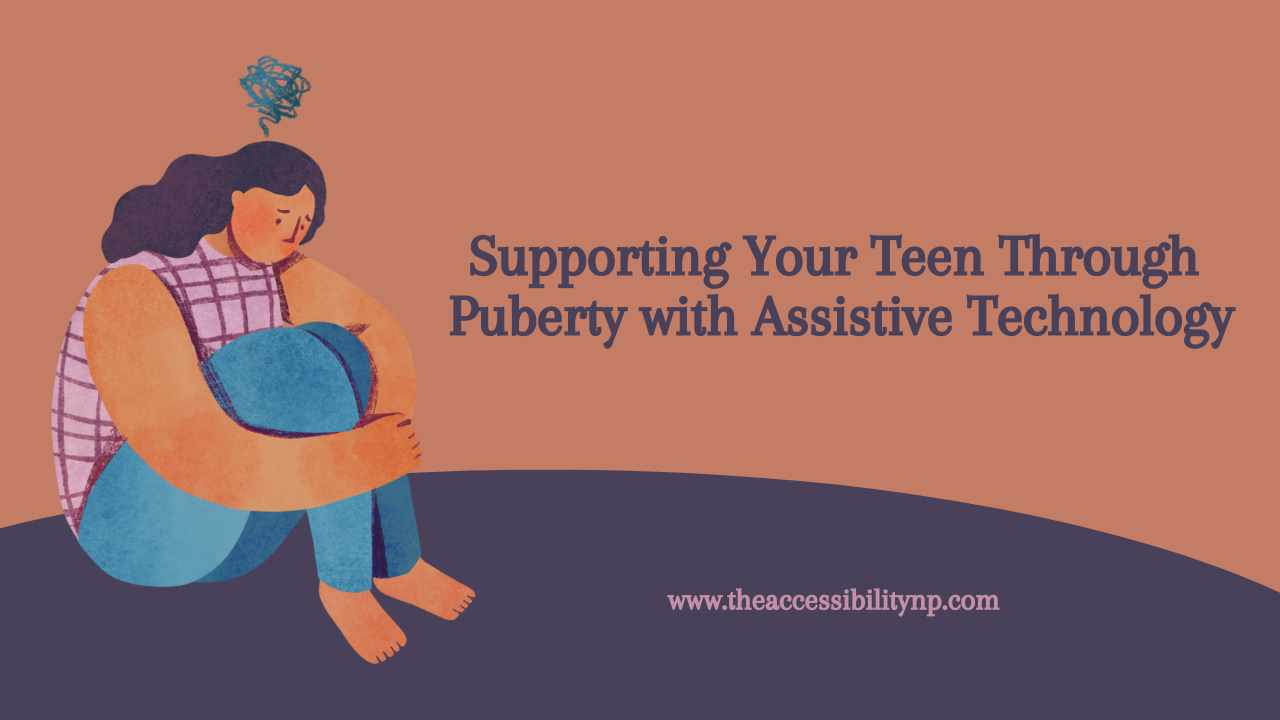Puberty is a time of immense growth and change, and for many families, it can feel like an emotional rollercoaster. These years often bring new challenges, but they also create opportunities for building stronger connections with your child and empowering their independence. If your child is autistic and also has cerebral palsy or epilepsy, puberty may present unique barriers that can feel overwhelming at times.
You are not alone in this journey. Countless parents are walking this path with their teens, learning as they go and finding creative ways to support their child’s needs. One powerful tool that can make a real difference is assistive technology (AT). When combined with patience, education, and a strong support system, AT can be a transformative resource for addressing the hurdles that come with puberty.
Understanding the Challenges of Puberty
Puberty is more than just physical changes—it’s also a time of emotional, cognitive, and social development. For autistic teens, this process can heighten sensory sensitivities, increase anxiety, and introduce complex emotions that are difficult to express. Teens with cerebral palsy may encounter additional physical challenges, such as managing hygiene or navigating increased muscle tightness. For those with epilepsy, hormonal changes can impact seizure activity, requiring careful management.
On top of these changes, communication barriers can make it harder for teens to express what they’re experiencing or how they feel. These challenges can lead to frustration, meltdowns, or withdrawal. As parents, it’s essential to approach these changes with understanding and compassion. Recognizing that your teen’s struggles are not “bad behavior” but rather a response to overwhelming changes can help you respond with empathy.
How Assistive Technology Can Help
Assistive technology is a broad category that includes tools, devices, and software designed to support individuals with disabilities. During puberty, AT can address specific needs related to communication, hygiene, emotional regulation, and independence. Below are ways AT can help your teen thrive during this time:
1. Supporting Communication Needs
Communication is at the heart of navigating puberty. Teens need a way to express how they feel, ask for help, and understand what’s happening in their bodies. For non-speaking or semi-verbal teens, augmentative and alternative communication (AAC) devices can be a lifeline. Here’s how to use AAC to support your teen during puberty:
- Expand Vocabulary: Add words related to puberty, emotions, and self-care to your child’s AAC device. Include terms like “period,” “pain,” “razor,” or “embarrassed.” These words can empower them to describe their experiences and seek support when needed.
- Use Visual Supports: Pair AAC with visual supports like social stories or picture schedules to explain puberty-related changes in a concrete way. For example, a visual schedule can outline the steps of changing a pad or brushing teeth.
- Model Communication: Take time to model how to use the AAC device in real-life scenarios. For instance, if your child seems anxious, you might say, “I feel nervous. Do you feel nervous too?” while pointing to the word on their device.
By making communication accessible, you’re giving your teen the tools they need to understand their body and advocate for themselves.
2. Building Independence in Hygiene
Hygiene is a significant focus during puberty, and for teens with physical or cognitive challenges, mastering these routines can feel daunting. Assistive technology can simplify hygiene tasks and make them more manageable:
- Smart Hygiene Tools: Consider electric toothbrushes with built-in timers or reminders to promote thorough brushing. Razors with safety guards or adaptive handles can assist with shaving.
- Step-by-Step Apps: Apps like “Choiceworks” or “CanPlan” allow you to create visual task schedules for hygiene routines. These apps can break down tasks like washing hands or changing clothes into smaller, easy-to-follow steps.
- Adaptive Equipment: For teens with CP, adaptive equipment like long-handled brushes, no-rinse shampoo caps, or shower chairs can make hygiene tasks more accessible and less stressful.
Creating consistency with hygiene routines and using AT to support these tasks can boost your teen’s confidence and foster a sense of independence.
3. Tracking Health and Managing Epilepsy
For teens with epilepsy, hormonal changes during puberty can sometimes increase the frequency or severity of seizures. Keeping track of your teen’s health is essential, and AT can simplify this process:
- Seizure Tracking Apps: Apps like “Seizure Tracker” or “My Seizure Diary” allow you to log seizure activity, medications, and triggers. These tools provide valuable data for you and your child’s healthcare team.
- Wearable Devices: Devices like the Empatica Embrace watch can detect seizures and alert caregivers in real-time. These tools offer peace of mind and ensure safety, especially during sleep or when your teen is alone.
Involving your teen in their health management, such as using these apps together, can help them develop self-awareness and a sense of control over their condition.
4. Managing Sensory and Emotional Regulation
Puberty often amplifies sensory sensitivities and emotional challenges for autistic teens. Assistive technology and sensory tools can provide comfort and support:
- Noise-Canceling Headphones: These can help your teen manage sensory overload in noisy environments like school or crowded spaces.
- Calming Apps: Apps like “Headspace” or “Calm” offer guided breathing exercises and relaxation techniques that can be especially helpful during moments of anxiety or overwhelm.
- Weighted Blankets or Compression Vests: These tools can provide calming sensory input, helping your teen self-regulate during stressful moments.
Teaching your teen how to use these tools proactively, rather than reactively, can make a big difference in their ability to cope with the challenges of puberty.
5. Encouraging Self-Advocacy
As your teen grows, fostering self-advocacy becomes increasingly important. Assistive technology can help them learn to express their needs and preferences in a way that feels empowering:
- Personalized AAC Devices: Encourage your teen to use their AAC device to make choices, set boundaries, or ask for breaks. For example, if they feel overwhelmed, they might use their device to say, “I need quiet time.”
- Visual Choice Boards: For teens who struggle with decision-making, visual choice boards can present options in a clear, manageable format. These boards can be used for everything from choosing clothes to selecting meals.
- Social Scripts: Practice using social scripts on their AAC device for common situations, such as asking for privacy or talking to a doctor.
Helping your teen develop these skills prepares them for greater independence as they transition into adulthood.
6. Using Technology to Create Predictability
Puberty can feel unpredictable and overwhelming for teens, especially when new routines or changes are introduced. Assistive technology can create a sense of stability:
- Visual Timers: Tools like Time Timer or visual countdown apps can help your teen anticipate transitions and feel more in control of their day.
- Digital Calendars: Use shared digital calendars with visual cues for important events, such as doctor’s appointments or school activities. Apps like Google Calendar can be customized to include reminders.
- Interactive Social Stories: Apps like “Story Creator” or “Pictello” allow you to create personalized stories that explain upcoming changes in a visual and engaging way.
Creating predictability with AT reduces anxiety and helps your teen feel more secure during this period of change.
Encouragement for Parents
Puberty isn’t just a time of growth for your teen—it’s a time of growth for you, too. As you navigate this new chapter, remember to be kind to yourself. Here are some reminders to carry with you:
- Celebrate Small Wins: Whether your teen learns a new hygiene skill, expresses an emotion for the first time, or simply makes it through a tough day, these moments are worth celebrating. Progress may be slow, but every step forward matters.
- Lean on Your Village: Seek support from other parents, professionals, and educators who understand your journey. Online communities, local support groups, and parent networks can provide advice and encouragement.
- Practice Self-Care: Supporting your teen during puberty can be exhausting, both physically and emotionally. Prioritize your own well-being by finding moments of rest, joy, and connection.
- Remember, You’re Not Alone: Many parents have walked this path before and are here to share their wisdom and support. You are part of a larger community, and together, you can find solutions and strength.
Puberty is a challenging yet transformative time for teens and their families. While the journey may feel daunting, assistive technology offers practical tools to address your teen’s unique needs and empower them to thrive. By focusing on communication, independence, emotional regulation, and self-advocacy, you’re helping your teen build skills that will serve them well into adulthood.
You’re doing incredible work as a parent, and your dedication to your teen’s growth is evident in the time and care you put into supporting them. Remember, progress takes time, and every small step is a victory worth celebrating.
See you next Monday. Stay inspired and keep pushing for accessibility!

